112015_YKPT_B7.pdf







November 20, 2015 www.plaintalk.net
Heritage 2015
7B
The Heritage Of The Clay County Courthouse
BY ARTHUR RUSCH
For The Plain Talk
In 1859, the residents of what is
now Clay County, joined with other residents of the area west of the
new state of Minnesota, to petition
for the formation of a territorial
government for the area. Although
the 1859 petition asking Congress
to organize Dakota Territory
was unsuccessful, a petition to
Congress in 1860 succeeded and
on March 2, 1861, President James
Buchanan signed the legislation
creating Dakota Territory. Two
days later, Abraham Lincoln was
inaugurated as President of the
United States and he appointed all
of the territorial officers. As the
first territorial governor, President
Lincoln appointed Dr. William
Jayne, the Lincoln family physician from Springfield, Illinois.
Although Vermillion hoped
to be selected as the temporary
capitol, since it was the largest
town in Dakota Territory, when
Governor Jayne arrived in Vermillion, on May 28, 1861, he stopped
only briefly for a reception at
Mulholland’s hotel and then went
on to Yankton, twenty-seven miles
west of Vermillion and located the
temporary capitol there. Allegedly
this was due to Governor Jayne’s
connections to President Lincoln’s
wife, Mary Todd Lincoln and the financial benefit that Mary’s cousin,
J.B.S. Todd received from having the capitol located where he
owned a portion of the town site.
When the first territorial legislature met in Yankton on March
17, 1862, one of the main issues
to be decided was the location of
the permanent capitol. After much
wrangling and threats of violence,
an agreement was reached that
the capitol would go to Yankton,
the territorial university would
go to Vermillion, and the territorial penitentiary would go to the
village of Bon Homme, which
was located along the Missouri
COURTESY PHOTOS: ARTHUR RUSCH
The Clay County Courthouse, built in 1912 has served the county for more than 100 years.
River about thirty miles west
of Yankton. In dividing up the
“pork barrel” projects, the Missouri River towns of Vermillion,
Yankton, and Bon Homme, banded
together to obtain the desirable
public projects and shut out Sioux
Falls and the Pembina (now North
Dakota) area along the Red River
which were the other centers of
population.
As a result of hard feelings arising from this dispute, efforts were
made to prevent Vermillion from
becoming the county seat of Clay
County. Each of the legislative bills
necessary to designate Vermillion
as the county seat “mysteriously”
disappeared and the legislative
session ended with no county seat
being approved for Clay County.
Although the 1862 legislative ses-
sion designated county seats for
all of the other organized counties, Clay County did not get a
county seat until the next session
of the legislature.
Within a short time after its
organization as a county, Clay
County rented space for a courthouse above Jensen’s Drug store
on the North side of Broadway
St., across the street from the St.
Nicholas Hotel. Although that
space provided room for trials and
public meetings, the other county
offices were spread in rented
space throughout the downtown
area. One of those other offices in
rented space was the office of the
County Probate Judge (who also
had the duties and responsibilities
as the County Treasurer). Other
county offices were located in
other buildings, generally on the
second floor.
On January 13, 1875, Vermillion
and Clay County suffered a severe
blow as a result of a fire. The great
fire of 1875 started in the County
Probate Judge’s offices above Dr.
Lyon’s drug store. The courthouse
on the north side of Broadway
Street did not burn in that fire but
many of the buildings on the north
side of Broadway and most of the
buildings on the south side of
Broadway burned in the fire.
Unfortunately, when the
Probate Judge’s office burned, all
of Clay County’s money and tax
records burned up with it. This
lead to heated accusations that
Simonson, the Probate Judge had
pocketed the county’s money and
burned down the town to cover
his theft. Ultimately, litigation led
to a Dakota Territory Supreme
Court decision requiring Simonson’s bondsmen to make good the
lost money. Among other issues,
the Supreme Court held that
failure of Clay County to furnish
a fireproof safe for the use of the
probate judge did not excuse the
loss of the county funds.
The loss of the county money,
which was about $2,700, led to
an effort to build a county owned
courthouse building. However, an
effort in 1876 failed due to opposition from the central and northern
parts of the county which still
hoped to see the county seat
moved to one of the other centers of population such as Lodi
or Bloomingdale. However, the
county did erect a 12 foot by 24
foot building as an office for the
County Treasurer.
Five years later when Vermillion was destroyed by the great
flood in March and April of 1881,
the rented courthouse again
avoided destruction, but like all of
the other buildings in town, was
extensively damaged. After the
flood, the citizens of Vermillion
made the decision to rebuild the
town on top of the bluff. Market
Street between Main and Union
(renamed Kidder Street after
Judge Jefferson Kidder) and two
blocks of Main from Market to the
corner of Church Street were the
primary business district in the
new town.
Among the many community
improvements made in Vermillion
after the flood were the construction of a new city hall at the intersection of Main Street and Church
Street and finally a county owned
courthouse. In August of 1881, Federal District Judge Jefferson Kidder
had ordered a grand jury to investigate the condition of Clay County’s
public buildings and they reported
that the twelve foot by twenty-four
foot building which contained the
records of the county treasurer and
COURT | PAGE 9B
USD: From Humble Beginnings To A Thriving Institution
1862: First legislature of the
Dakota Territory authorizes
establishment of University at
Vermillion. The authorizing legislation is signed by Governor
Jayne on April 21.
1863: First South Dakota
Board of Regents named.
1881: Federal government
grants land to Dakota and Montana territories for university
construction.
1882: First USD classes held
at Clay County Courthouse.
1883: South Dakota Gov.
Ordway signs bill accepting all
USD real property, making it an
official state University.
1883: USD's first academic
unit, the College of Arts and
Sciences, established.
June 5, 1883: Closing exercises mark end of USD’s first
school year.
1885: Construction of Old
Main (then known as University
Hall) completed.
1885: West Hall construction
is completed, making it USD’s
second building and first dormitory.
1887: Students publish first
issue of Volante.
1888: USD's first graduates
are Clarence Antisdel, Charles
Brinstad and Herbert Houston.
1888: East Hall is completed, bringing USD’s total number of buildings to three.
June 12, 1889: USD Alumni
Association is created.
1889: Intercollegiate football
begins with a tie game against
South Dakota Agricultural College.
1893: Old Main is destroyed
by fire.
1899: Reconstructed Old
Main opens to students.
1901: School of Law begins
offering classes.
1905: USD’s first armory
opened; now known as The
Belbas Center.
1907: School of Medicine
begins offering classes.
1908: Original School of Law
COURTESY PHOTO: USD ARCHIVES AND SPECIAL COLLECTIONS
Old Main and East Hall on the Campus of the University of South Dakota circa 1890.
(now Arts & Sciences) building
opens to students.
1914: First "Dakota Day" celebration takes place.
1916: Division of Continuing
Education established.
1922: USD joins newly established North Central Athletics Conference as a charter
member.
1924: Dakotans and Strollers
organizations established.
1925: Auditorium and administration building (later named
Slagle Hall) completed.
1926: Inman Field, USD’s
first football stadium, completed and ready for play.
1927: Graduate School,
School of Education and
School of Business Administration established.
1929: USD’s “new” Armory
opens, includes swimming pool
and is site of many basketball
triumphs.
1931: College of Fine Arts
begins offering classes.
1931: Construction begins
on USD's first student union,
the South Dakota Union building.
1933: Enrollment falls to record low due to Great Depression, drought, and grasshopper
infestations.
1946: After three years away
because of World War II, USD
Football returns to campus and
plays a short, four-game season. First post-Pearl Harbor
Dakota Day is celebrated.
1949: Julian Hall opens.
1951: McKusick Law Library
(now McKusick Technology
Center) constructed.
1951: School of Business
earns AACSB accreditation for
the first time.
1952: Construction begins
on Noteboom Hall.
1954: Charlotte Noteboom
Hall accepts first tenants.
1957: School of Business
building (later named Patterson
Hall) completed.
1958: Expansion of graduate programs, including new
offerings in geology, physical
education, humanities, business administration, business
teacher education and natural
sciences.
1963: Ground broken for
Coyote Student Center.
1967: Construction of I.D.
Weeks Library completed.
1968: First graduates of
USD’s dental hygiene program
earn their diplomas.
1969: East Hall converted for
use as academic space.
1970: USD students take
roles in University Senate for
the first time.
1973: Shrine to Music Museum, now known as the National
Music Museum, opens in original campus library facility.
1977: Final season for football at Inman Field and basketball in USD’s New Armory.
1979: Construction of the
DakotaDome, the region's only
domed arena, completed.
1981: New School of Law
building constructed.
1983: USD celebrates a centennial, observing 100 years
since the beginning of classes
in 1882.
1985: Beede Hall becomes
first residence hall with co-ed
living in South Dakota.
1985: Construction begins
on new W.H. Over Museum.
1989: Betty Turner Asher becomes first woman to serve as
USD president.
1989: The Freedom Forum,
founded by Al Neuharth ‘51
gives its first Al Neuharth Award
for Excellence in Journalism to
Walter Cronkite.
1997: James W. Abbott becomes first USD alumnus to
serve as president of USD.
1997: Old Main undergoes
major renovation and reopens
for academic use after a 24year hiatus.
2001: Permanent roof in-
stalled on DakotaDome, replacing original pressurized roof.
2003: Renovations completed on the E.O. Lawrence
Telecommunications
Center
and building renamed the Al
Neuharth Media Center.
2004: Dean Belbas Center
(originally the Armory Building) restored and reopened to
house admissions, financial aid
and registrar's office.
2006: USD formally announces intention to move
athletic programs to NCAA Division I.
2007: School of Medicine
celebrates its centennial in
newly constructed Lee Medical
Building.
2007: Campaign
South
Dakota, a fundraising effort
launched in June 2001, concludes after raising more than
$133 million.
2009: Muenster University
Center opens to students.
2009: USD's new business
school, Beacom Hall, opens to
students.
2010: With 10,151 students,
USD exceeds 10,000 mark for
first time.
2010: Coyote Village, a suitestyle student housing unit,
opens for first residents.
2011: USD Fitness Center
opens.
2012: Aalfs Auditorium and
Skinner pipe organ renovated
in Slagle Hall.
2012: USD celebrates 150th
anniversary of its founding;
April 21 declared the date of
Charlie Coyote’s birthday.
2014: USD Celebrates 100th
Dakota Days
Overactive bladder?
You’re not alone.
One in three women face overactive bladder problems.
Drs. Michael Fiegen and Kevin Benson offer the latest in
treatment options and clinical trials available for bladder
incontinence and female pelvic organ prolapse.
Call (605) 328-8750 to
schedule an appointment.
Sanford Female Pelvic Medicine
and Reconstructive Surgery Clinic
womens.sanfordhealth.org
keyword: Bladder Health
015001-00400 10/15
When the first Legislature of the Dakota Territory
met in 1862, it authorized
the establishment of the
University at Vermillion,
making it the oldest postsecondary institution in the
Dakotas. The authorization
was unfunded, however,
and classes did not begin
until 20 years later under
the auspices of the privately
incorporated University of
Dakota, created with great
support from the citizens
of Clay County. Ephraim
Epstein served as the first
president and primary faculty member in the institution
that opened in loaned space
in downtown Vermillion.
Before 1883 ended, the university had moved into Old
Main, and the first public
board was appointed to
govern the fledgling institution.
Enrollment increased
to 69 students by the end
of the 1883, and, by the
time South Dakota became
the 40th state in 1889, USD
boasted an enrollment of
500 students. USD's first
academic unit, the College
of Arts & Sciences, was
established in 1883.
The following is a brief
timeline of USD’s history:
This office has achieved Safety Certification in Outpatient Practice Excellence from
the American Congress of Obstetricians and Gynecologists
ACOG SCOPE Certified is the registered certification trademark or certification trademark of the American Congress of Obstetricians and Gynecologists.

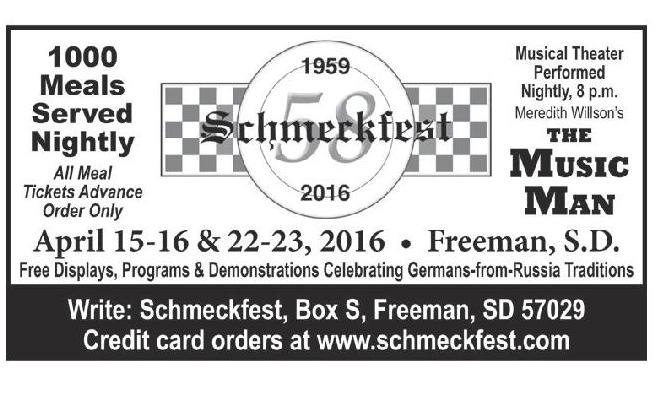

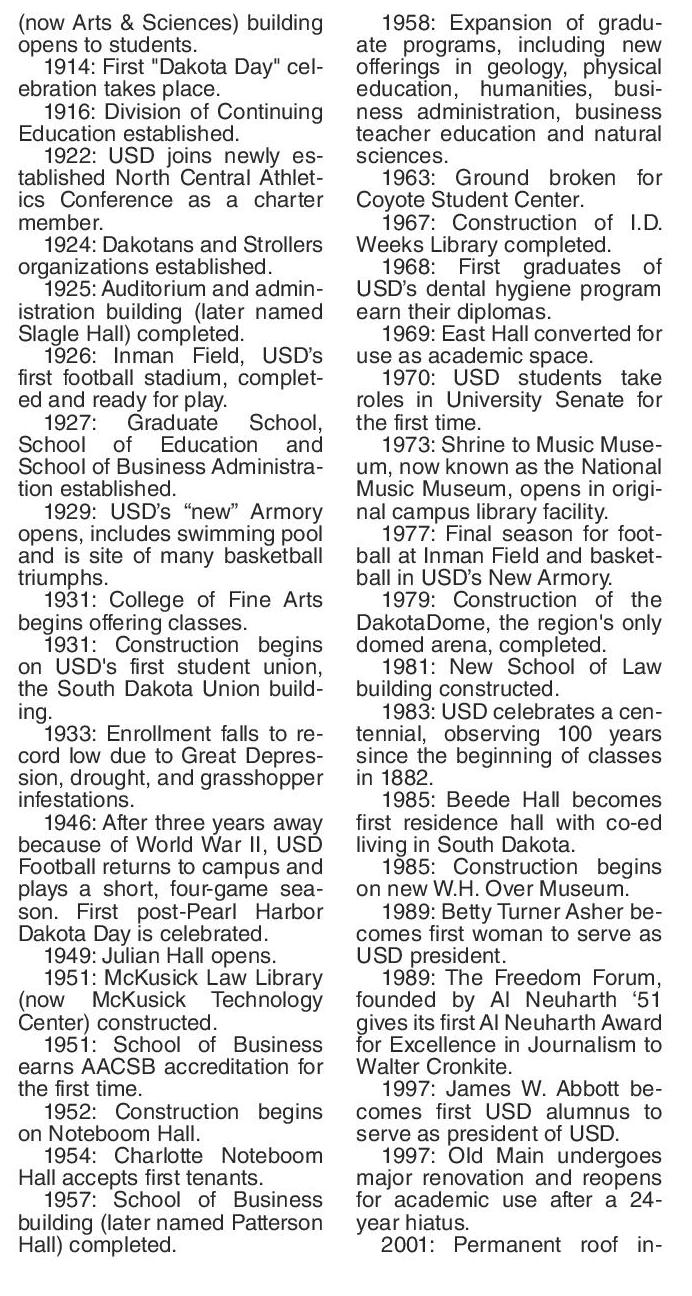

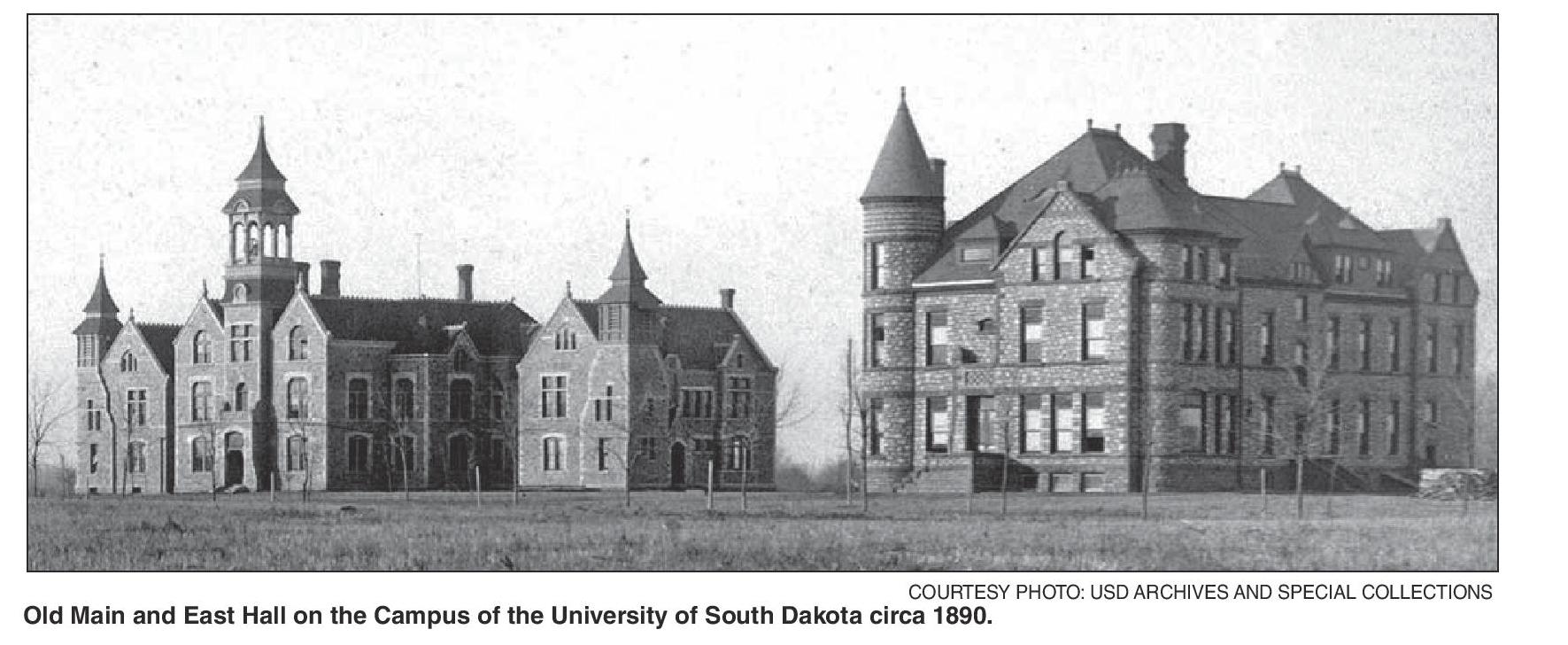



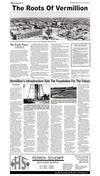
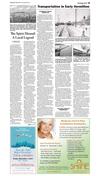
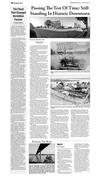
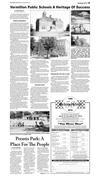


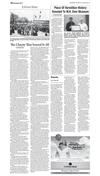
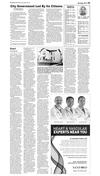



 Previous Page
Previous Page






